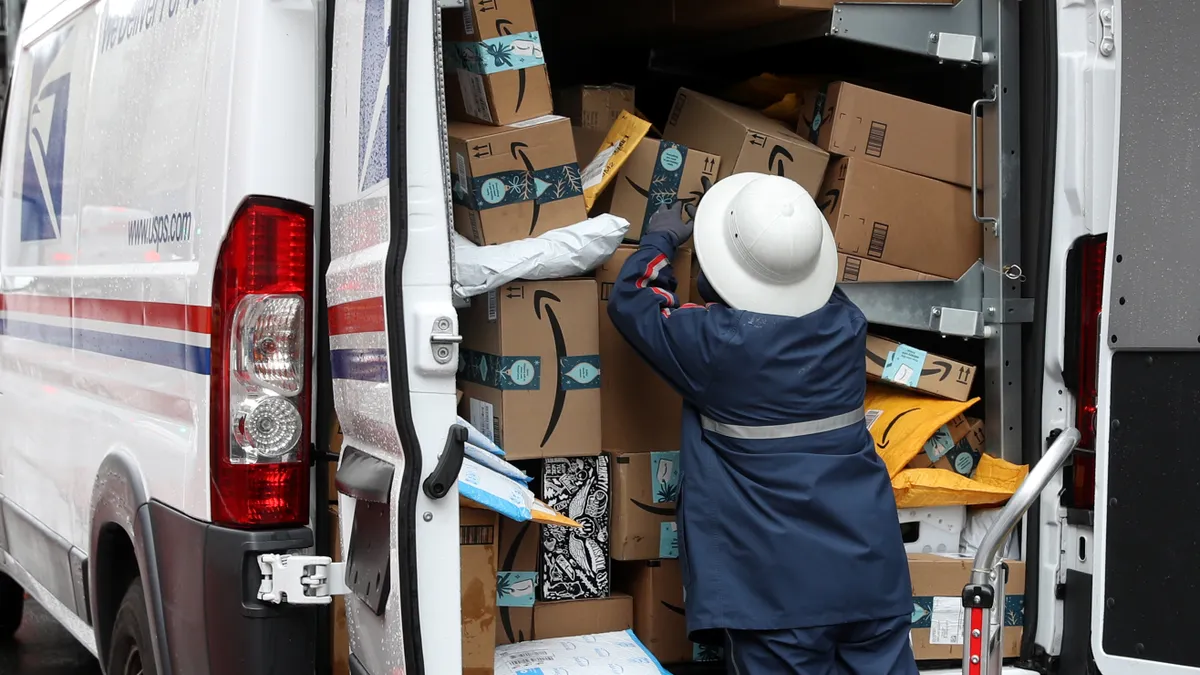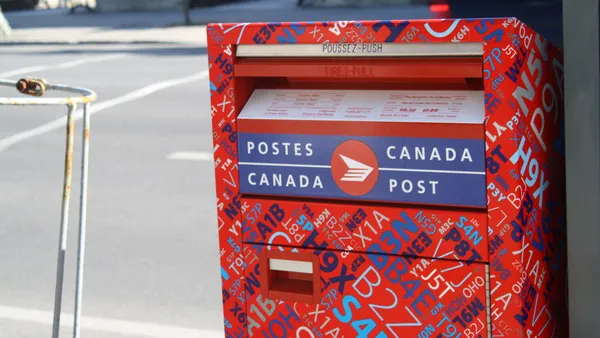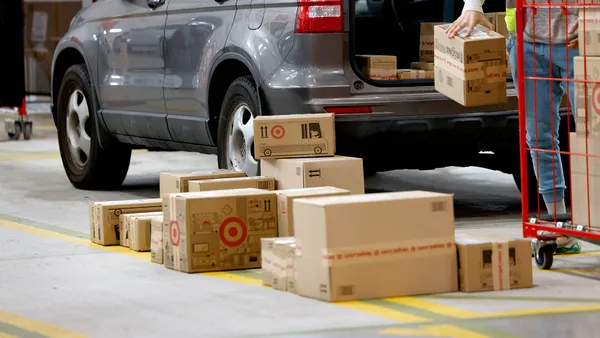Dive Brief:
- USPS is moving forward with its plan to lengthen delivery standards for its First-Class Package Service despite concerns from an agency regulator that the move could reduce delivery reliability, with the implementation date to be announced "shortly," a spokesperson said Monday.
- In an advisory opinion last week, the Postal Regulatory Commission said the carrier's plan to shift more FCPS volume from air carriers to its ground transportation network could reduce reliability since it hasn't shown it can support the looming operational changes and volume spike. But the Postal Regulatory Commission also said its ability to enforce its advice on competitive services like package delivery is limited compared to mail delivery.
- USPS is reviewing the Postal Regulatory Commission's recommendations, according to a spokesperson, but it is confident it can successfully implement the changes to improve delivery reliability and save costs. About one-third of packages will see a four to five day delivery standard (the current standard is three days) as a result of the changes.
Dive Insight:
USPS is moving fast to overhaul its operations for financial sustainability and more predictable delivery times. The agency already implemented new service standards on Oct. 1 that will increase transit time standards by one to two days for some first-class mail and periodicals. Now, changes are imminent for its lightweight package service that saw a surge in demand amid the COVID-19 pandemic.
A reduced reliance on air transport, which the Postal Regulatory Commission said will be implemented prior to peak season, will affect parcel deliveries differently depending on their final destinations.
An analysis by Partners for Economic Solutions found the new standards would disproportionately downgrade service standards along the West Coast, according to testimony from the firm on behalf of the American Postal Workers Union. East Coast deliveries would be affected to a lesser extent, while the Midwest would be the primary recipient of service upgrades. About 5% of volume overall will see faster service standards.
Partners for Economic Solutions flagged several areas that will be subject to a longer delivery standard, including at least 61% of ZIP Codes along the West Coast. Most of Nevada and Idaho would also see delivery times impacted, as well as 81% of ZIP Codes in southern Texas and southern Oregon.
The vast majority of FCPS volume fits into the commercial, or bulk shippers, category, with pharmaceutical companies and online marketplaces being the primary customer segments, the Postal Regulatory Commission said. The service for lightweight packages saw a large increase in volume in 2020 due to the pandemic-driven online shopping boom.
The upcoming changes aren't expected to have an effect on FCPS volume, said Thomas Foti, vice president of product solutions for USPS, in testimony. Respondents to a USPS survey most frequently cited price as their main reason for using FCPS, and most respondents said they would maintain or increase volumes with the proposed changes, Foti said. The survey sampled 458 FCPS Commercial shippers.
And although the operational changes will increase the strain on the carrier's ground transportation network, Stephen Hagenstein, director of logistics modeling and analytics, said in testimony that the agency uses only 42% of its transportation capacity currently.
Still, the Postal Regulatory Commission said it is concerned the carrier's timeframe to implement the changes "may be too ambitious given that implementing processing and transportation changes at this time of the year would be difficult under typical circumstances and may face additional challenges due to the continuation of the COVID-19 emergency and the industry-wide stress."














